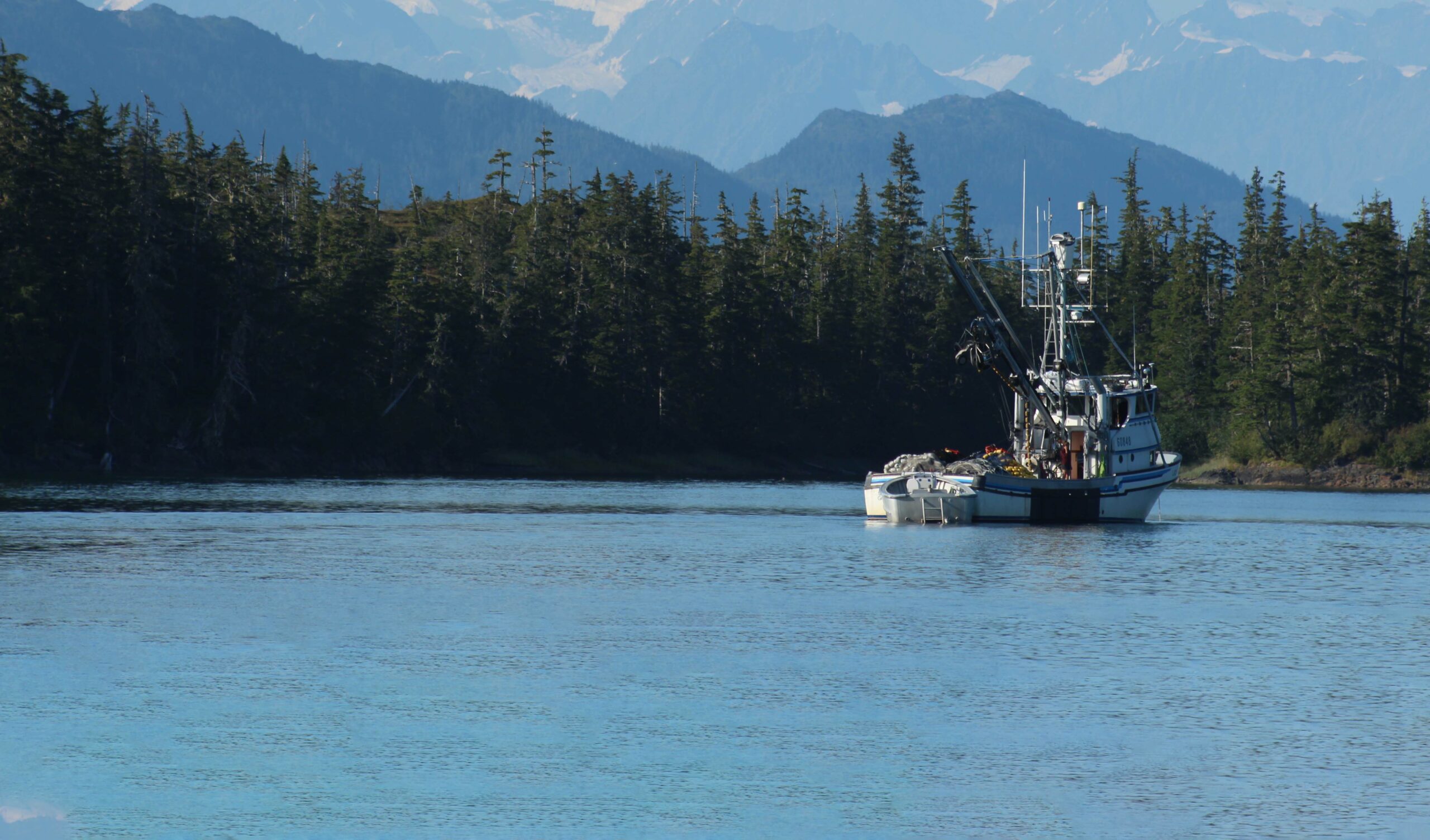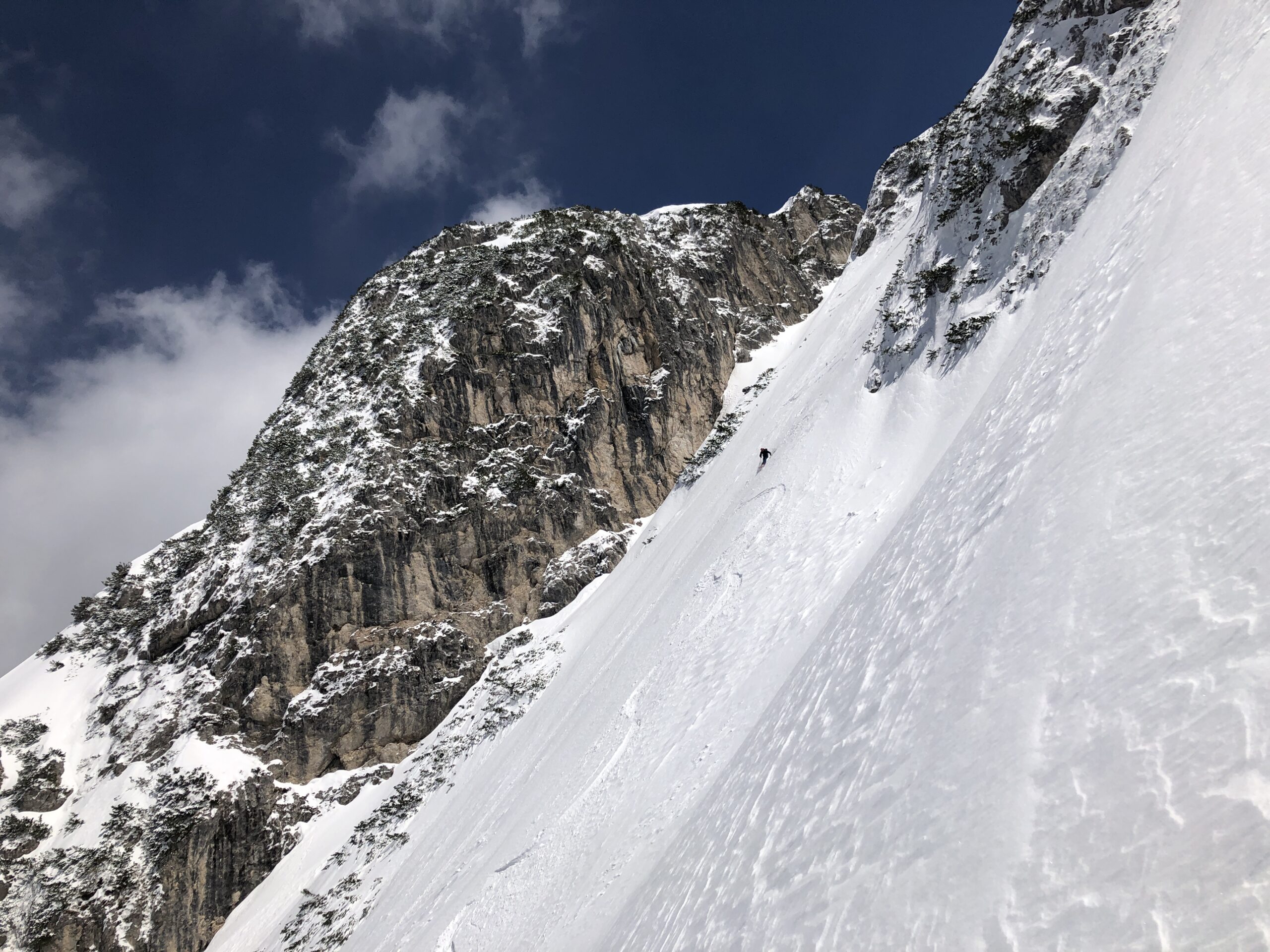In June 2016, an Italian expedition comprising Zeno Cecon (from Tarvisio, Udine), Carlo Cosi (Padova), Enrico Mosetti (Gorizia) and Leonardo Comelli (Trieste) attempted the first complete descent of Laila Peak (6096 metres) in the Karakoram range in Pakistan: a 1500m descent of 45-55 degree slopes, on one of the most beautiful mountains in the world. Alas the team were forced to turn back 100 metres from the summit due to the conditions. Things took a turn for the worse on the descent, with the tragic loss of photographer Leonardo Comelli who fell at around 5350m and was unable to arrest his slide. An adventure and a tragedy, told by crow Enrico Mosetti (alias Mose).
“Leo has fallen”. Just this simple phrase screamed by my buddy Zeno in the glacial cold of Karakoram.
Within a few seconds, I realized what just happened and what will be. Leo fell above the big serac section in the middle of the west face of Laila Peak at about 5350 meters altitude. By the time Zeno arrived at my side both of us already knew that our friend had passed away.
Leonardo Comelli came to Pakistan with us as our photographer, but he was not just “the photographer”. He was one of us, a skiing and climbing partner. A friend.
For me he was something more. He was like a brother.
We spent almost the last four years climbing and skiing together around the Alps and the Balkans. We shared the same room during the last two winter season in Sella Nevea and I cannot count how many nights we slept in my van or how many days we shared the same rope. He was a great and highly experienced climber and alpinist, a good skier and talented photographer. A son and beloved brother. Above all he was a solar person, always ready to smile, laugh, joke in every situation and party. So I will stop writing about sad thoughts and tell you about the amazing times we had in the Karakoram range.
The first time I heard about Laila Peak I was seventeen. I read an article written by Fredrik Ericsson after his attempt to ski it in 2005. Since that day Laila Peak has been my secret dream. A completely skiable shark tooth mountain situated in the middle of Karakoram range, Pakistan. 6096 meters high. Last summer I started to plan the expedition and found partners for this adventure, Zeno Cecon, a ski teacher and big mountain skier, Carlo Cosi, a mountain guide from the Dolomites and my dear friend Leonardo Comelli.
We left Italy on the 25th of May, from Venice to Islamabad via Istanbul. Almost twelve hours sitting on a plane before landing in the warm and wet dawn of Islamabad. When we arrived at the hotel we just collapsed onto the beds for the whole morning, then we had the first taste of Pakistani food. The idea was to move from the capital as soon as possible to the northern region of Pakistan, Baltistan. In the afternoon we had the first problem, our solar panel inverter for every other electronic device broke down so we went to every electronic shop to find one and had found one by dinner time. The next morning we took another plane and after a crazy flight through the Karakoram mountains we landed in Skardu.
We spent a few days in Skardu waiting for the permits we needed to enter the upper Hushe valley, home of Laila Peak. During our stay we had some relaxing days. We had extra-cold baths in the Indus river, tried to play cricket with local kids on the river beach, watched soccer and polo games and socialized with Pakistani people- some of the kindest I have ever met, always ready to offer you help, food or local tea. We also tried local street food, but after few days we realized that wasn’t the best idea…
After getting the permits we finally moved to Hushe- an eight-hour trip through the deep valleys and villages of Karakoram in a Toyota Land Cruiser with 800,000 miles on the clock. On the way to Hushe we stopped in the village of Kande, home of our cook, Fida. Here we gave the local school children notebooks and pencils in return for the happiest smiles you can imagine, hugs and a special welcome lunch.
The approach to base camp finally started the day after. A twenty-one km hike divided into two days from 3200 meters altitude to 4200. The first night we stopped in the woods of Saicho, right between Gondogoro valley and K6-K7 valley. We set up BC on a little glacial lake shore close to Gondogoro glacier moraine. Just two tiny 2-person tents, a kitchen tent and mess tent. From BC we had a stunning view of some incredible mountains, most of them unnamed and unclimbed and of course unskied. We also had a view of the huge Masherbrum, the 22nd highest mountain in the world (7.821 m). Accompanying us there was just Fida, our cook and his assistant, Ali Akbar. They never cooked us the same dish twice during our stay, except for goat meat…yes, we had a goat with us, but not for long..
We started our acclimatization time for two days, first just walking along Gondogoro glacier until we got a good look at the northwest face of Laila Peak. Simply breathtaking.
We started to plan our way to the summit, and to choose the best route to reach the steep, tooth-shaped northwest upper face of Laila, the lower part is constantly subject to avalanche and serac falls. Our final decision settled on the “Spanish route”, the one that a Spanish expedition followed during their winter ascent.
Finally we could put skis on our shoulders. The weather was not perfect. Sometimes snowing, sometimes sunny. On the way up the couloir we had chosen it started to snow. When we reached the col at about 5050 meters, the sun shone again. We climbed up the south west side and skied down the other side, the north west – maybe the first descent – on perfect warm pow in the steep upper section of the couloir and corn in the lower, low angle section.
Just one day of rest gave us the energy we needed to repack our backpacks and we went out for another day at high altitude. We wanted to look at the way to camp 1 and the lower section of the Laila descent. So we climbed to the col at 5350 meters along the “Spanish route”. First we had to climb easy rocks on the right side of waterfall. We reached the snow, put on our ski boots and crampons and followed a couloir and then a large snowfield until a saddle at about 5100m.
We were lucky to immediately find the belay that the Spanish used a few years ago to rappel on the other side of the saddle. Now on the south side of the mountain, we started to sweat and struggle more to break the trail to our campsite at the col. Finally at the col. we were glad to find it wide and comfy with enough flat terrain to put up our tiny tents.
Navigating between the seracs on the northwest lower slopes of Laila was more difficult than expected but exciting as well. Skiing beneath those sleeping giants is always pretty committing, but once we were on easier, unexposed terrain we felt relaxed and confident about our attempt to summit. On the way down we could also see the steep slope of Laila better. Comparing it to something in the Alps, it looks like the north face of Col de l’Aiguille Verte, but hanging above a 1000-meter cliff, on a 6000-meter mountain.
Back at base camp Fida and Alì welcomed us back with a special dinner. A sort of pizza cooked without an oven…we didn’t ask how they did it but after all the efforts of the day, it tasted like a proper Italian pizza. We spent the next days relaxing near the campsite: walking around the moraine, bouldering, shooting time lapses, reading and figuring out how to prepare our backpacks for the summit attempt.
Once we felt ready and rested we repacked everything. This time the backpacks had quite a different weight. With tents, sleeping bags, gas, food and all the mountain gear we probably carried something like 18 kilos each. Despite the heavy backpacks we took almost the same amount of time as the first time to reach the col at 5350 meters.
We had a perfect afternoon and evening at C1, without wind and quite a warm sun. After a nap we could enjoy the sunset in front of the giants: K2, Broad Peak, the Gasherbrums… The alarm clock was set for half past midnight, so at about 6.30 pm we went to sleep, or tried to.
The hardest thing after coming out of a warm sleeping bag must be putting your feet into frozen skiboot shells, it took me almost 10 minutes per foot. Under the cover of darkness we started on our way to the summit with a long traverse. We followed a different way from our predecessors on Laila peak. The first and second expeditions in 1987 and 1993 followed a mixed route on the north west spire, in 2005 and 2009 when Fredrik Ericsson tried to ski it he went immediately to the left ridge/spine of Laila and then straight up. The Spanish in the 2014 winter climbed the ridge just above C1.
Instead of all these routes, we climbed in the middle of the face going diagonally right to left. This strategy took us almost to where Fredrick started to ski in 2005. Where the ridge/spine gets narrower. At about 8 am we were really close to the ridge, but a 70° black ice section trapped us. We took out our 5 mm rope and made a couple of pitches. Leo led the four of us to the ridge, at about 5900m.
I was really surprised to notice that the last hundred meters looked way less steep than the slope we had to ski down, but when we reached the ridge we found ourselves breaking trail in waist deep snow- about 60 cm of sugar plus 10 of crust hung on blue ice at 55°.
We struggled for an hour or more and gained less then 100 meters. It became impossible to go up and more dangerous by the minute. The sun started to warm the slope. No one wanted to say the obvious but we had to turn back, even if the summit was so close.
As expedition leader it was up to me to say go down. We looked at each other and understood it was the right and only choice. We tried hard and pushed ourselves as far as reasonable safety allowed and I think we did something beautiful even if we did not summit.
Even starting to ski was not easy thing at about 5950/6000 meters altitude. We switched into ski mode hanging off ice screws. As always, the first turns were the most difficult, but once we found the rhythm we skied the upper slope of Laila in less then ten minutes, a dream line even if the snow was hard but grippy, sort of old school steep skiing.
To reach our tents we had to traverse back above the cliff and seracs of the lower section of the mountain. During the traverse we had to cross a couple of icy section, just a few meters each but sketchy with that exposure. On the third and last part of this section, I passed first, then Zeno and Carlo. Leo was last, he probably hit a hidden block of ice, lost control of his ski and fell face down. No sound, just Zeno screaming “Leo has fallen”.
Our expedition and the Karakoram dream ended in the worst way. A few days later we left the base camp and started on our way back home.
We have to thank all the people that helped us after the accident, from the porters in Hushe and Kande to the Italian Embassy in Islamabad, the Pakistan authorities and our agency Karakoram magic mountain.


